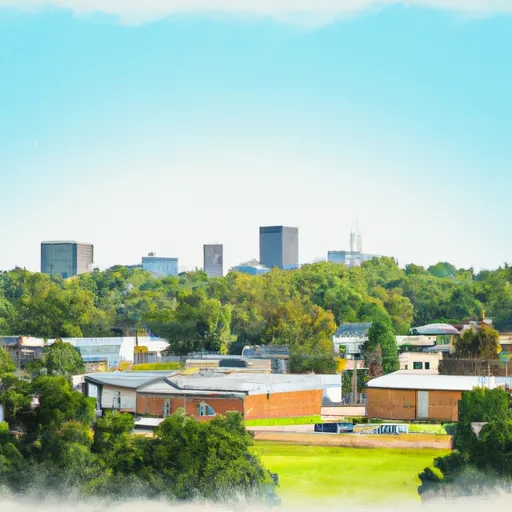-
 Snoflo Premium
Snoflo Premium
Get unlimited access to all our content
With no Ad interruptions! - Start Your Free Trial Login with existing account
Sherwood
Eden Index
Climate
8.0
•
Recreation
7.7
•
Community
2.8
•
Safeguard
6.6/10

Sherwood, Arkansas, located in Pulaski County, offers various outdoor recreation opportunities in an inviting climate. The city experiences a humid subtropical climate with hot, humid summers and mild winters. Summers bring average high temperatures in the 90s°F (32°C), while winter temperatures range from the 40s°F (4-9°C). Sherwood receives an average of 50 inches (127 cm) of rainfall annually, with the wettest months being May and November.
Hydrologically, Sherwood is centrally located near several bodies of water. It lies along the eastern bank of the Arkansas River, providing easy access to boating, fishing, and water sports activities. Additionally, within driving distance, the region is dotted with numerous lakes and reservoirs, such as Lake Maumelle and Greers Ferry Lake, offering opportunities for swimming, boating, and fishing.
Outdoor enthusiasts can explore Sherwood's parks and trails. The city boasts a range of well-maintained parks with amenities like playgrounds, sports fields, and picnic areas. The popular Sherwood Forest Park offers walking trails, a fishing pond, and a dog park for pet owners. The nearby Burns Park, located in North Little Rock, features extensive trails, disc golf courses, and even a campsite, catering to hikers, bikers, and nature lovers.
With its pleasant climate, proximity to water bodies, and diverse outdoor recreational offerings, Sherwood, Arkansas, provides an excellent destination for those seeking both relaxation and adventure.
What is the Eden Index?
The Snoflo Eden Index serves as a comprehensive rating system for regions, evaluating their desirability through a holistic assessment of climate health, outdoor recreation opportunities, and natural disaster risk, acknowledging the profound impact of these factors on livability and well-being.
Climate Health Indicator (CHI): 8.0
Sherwood receives approximately
1254mm of rain per year,
with humidity levels near 84%
and air temperatures averaging around
17°C.
Sherwood has a plant hardyness factor of
8, meaning
plants and agriculture in this region tend to thrive here all year round.
By considering the ideal temperature range, reliable water supplies, clean air, and stable seasonal rain or snowpacks, the Climate Health Indicator (CHI) underscores the significance of a healthy climate as the foundation for quality living.
A healthy climate is paramount for ensuring a high quality of life and livability in a region, fostering both physical well-being and environmental harmony. This can be characterized by ideal temperatures, reliable access to water supplies, clean air, and consistent seasonal rain or snowpacks.
Weather Forecast
Streamflow Conditions
Lower Arkansas-Fourche La Fave
Area Rivers
Lower Arkansas-Fourche La Fave
Snowpack Depths
Lower Arkansas-Fourche La Fave
Reservoir Storage Capacity
Lower Arkansas-Fourche La Fave
Groundwater Levels
Recreational Opportunity Index (ROI): 7.7
The Recreational Opportunity Index (ROI) recognizes the value of outdoor recreational options, such as parks, hiking trails, camping sites, and fishing spots, while acknowledging that climate plays a pivotal role in ensuring the comfort and consistency of these experiences.
Access to outdoor recreational opportunities, encompassing activities such as parks, hiking, camping, and fishing, is crucial for overall well-being, and the climate plays a pivotal role in enabling and enhancing these experiences, ensuring that individuals can engage in nature-based activities comfortably and consistently.
Camping Areas
Nearby Ski Areas
Catastrophe Safeguard Index (CSI):
The Catastrophe Safeguard Index (CSI) recognizes that natural disaster risk, encompassing floods, fires, hurricanes, and tornadoes, can drastically affect safety and the overall appeal of an area.
The level of natural disaster risk in a region significantly affects safety and the overall livability, with climate change amplifying these risks by potentially increasing the frequency and intensity of events like floods, fires, hurricanes, and tornadoes, thereby posing substantial challenges to community resilience and well-being.
Community Resilience Indicator (CRI): 2.8
The Community Resilience Indicator (CRI) recognizes that education, healthcare, and socioeconomics are crucial to the well-being of a region. The CRI acknowledges the profound impact of these elements on residents' overall quality of life. By evaluating educational resources, healthcare accessibility, and economic inclusivity, the index captures the essential aspects that contribute to a thriving community, fostering resident satisfaction, equity, and social cohesion.

